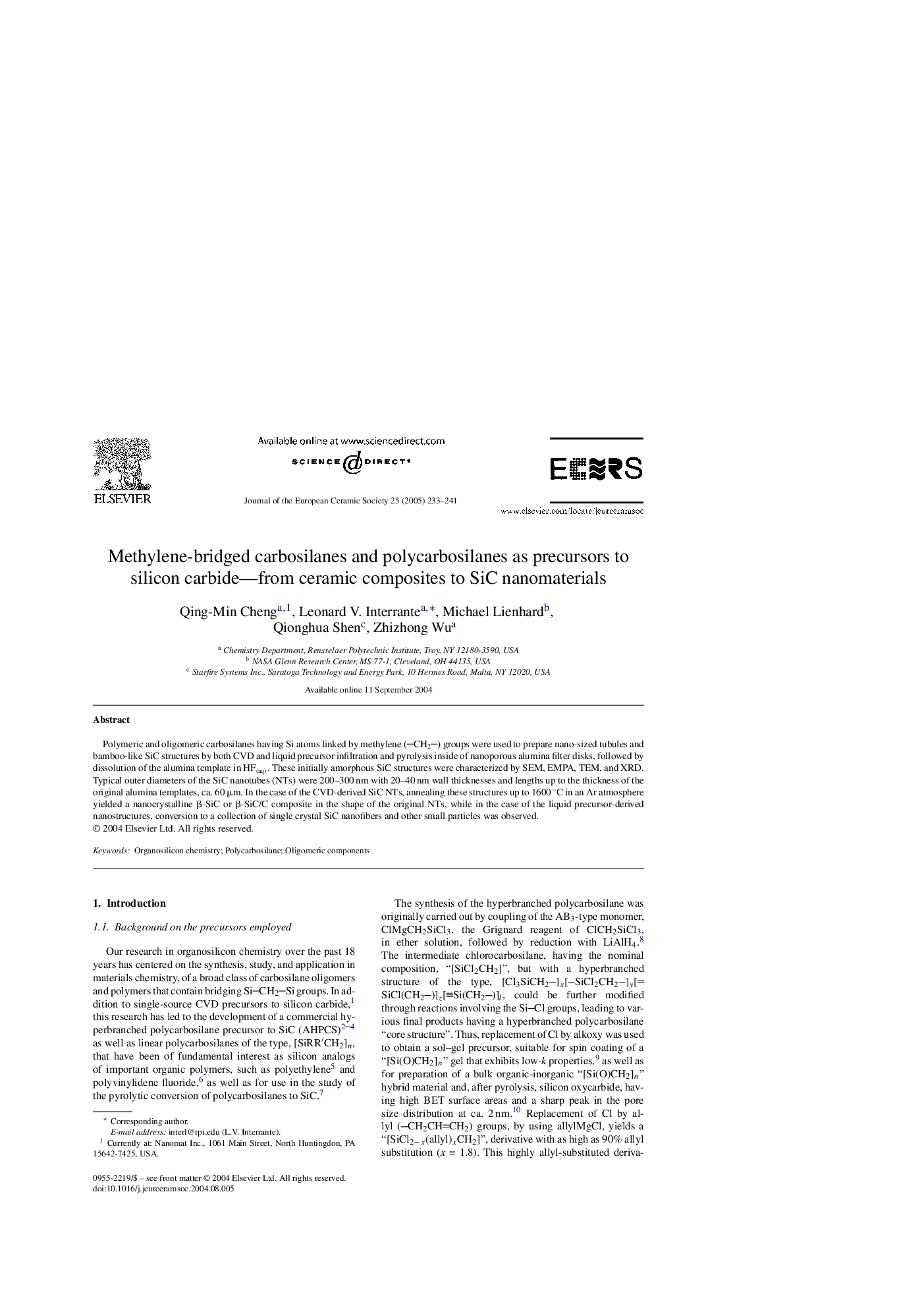| Article ID | Journal | Published Year | Pages | File Type |
|---|---|---|---|---|
| 9777957 | Journal of the European Ceramic Society | 2005 | 9 Pages |
Abstract
Polymeric and oligomeric carbosilanes having Si atoms linked by methylene (CH2) groups were used to prepare nano-sized tubules and bamboo-like SiC structures by both CVD and liquid precursor infiltration and pyrolysis inside of nanoporous alumina filter disks, followed by dissolution of the alumina template in HF(aq). These initially amorphous SiC structures were characterized by SEM, EMPA, TEM, and XRD. Typical outer diameters of the SiC nanotubes (NTs) were 200-300 nm with 20-40 nm wall thicknesses and lengths up to the thickness of the original alumina templates, ca. 60 μm. In the case of the CVD-derived SiC NTs, annealing these structures up to 1600 °C in an Ar atmosphere yielded a nanocrystalline β-SiC or β-SiC/C composite in the shape of the original NTs, while in the case of the liquid precursor-derived nanostructures, conversion to a collection of single crystal SiC nanofibers and other small particles was observed.
Related Topics
Physical Sciences and Engineering
Materials Science
Ceramics and Composites
Authors
Qing-Min Cheng, Leonard V. Interrante, Michael Lienhard, Qionghua Shen, Zhizhong Wu,
